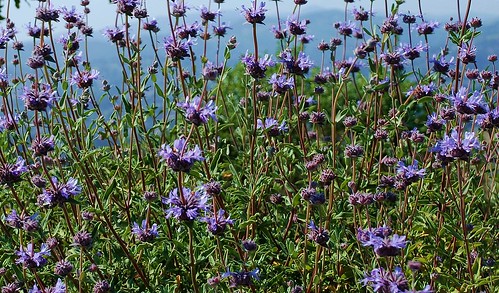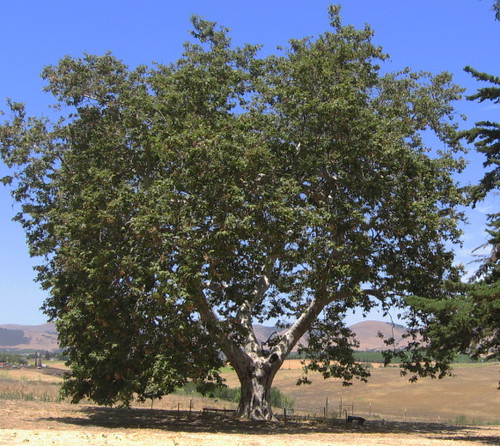This week month, to celebrate 230 years of Los Angeles, the Militant will help you understand the Los Angeles before September 4, 1781 - the indigenous people, animals, plants and even the literal ground we walk/drive/bike/take transit/skate on. Lots of militant research went into this folks, so the Militant would not only appreciate your reads, but passing the links on to others so that they may learn as well. With a better understanding of the Los Angeles before Los Angeles, we can be better and smarter Angelenos. So welcome to The Militant's second weeklong topical series -- NATIVE WEEK! MONTH!

Nachochan?!*
From the get-go The Militant firmly and blatantly established and identified himself as a Native Angeleno -- meaning someone who was born and raised in this City. Ever a defender of his fellow natives...
But us (
Contemporary) Natives are relative transplants themselves compared to the
real natives of Los Angeles. Like us (Contemporary) Natives, the Indigenous Natives were derided, considered culturally inferior and largely treated as though they never really existed by their respective invaders.
Yesterday, we celebrated the 230th anniversary of the founding of The Pueblo of Our Lady Queen Of The Angels of The River of The Little Portion. But history being multi-layered, multi-faceted and most of all, of multi-perspectives, September 4, 1781 also marked the end of an entire nation, a culture, a way of life.
That nation, that culture, that way of life was
the Tongva.
They weren't even given the benefit of self-identity. Most history books refer to them as "Gabrielinos," the name given to them by the Spanish settlers, referencing the
San Gabriel Archangel Mission. But they called themselves Tongva.
The Militant doesn't claim to be an expert on Tongva or Native American culture (already he has revealed that his parents were immigrants of an unspecified third world country, so that kinda assumes he doesn't have Tongva blood (that he knows of, at least...)). But he has done hours upon hours of militant research, so that you will have a better understanding of who the
Real Los Angeles Natives were.
To understand the Tongva people, one must throw out most of the preconceptions we have of Native Americans. The Tongva didn't live in teepees, wear moccassins or beat on drums.
The Tongva, which meant, "People of the earth and ocean," were considered by historians to be pretty advanced and civil among the 60-plus Native American tribes of California. They were only one of two tribes (the other was the neighboring Chumash, a related coastal tribe that inhabited today's Ventura, Santa Barbara and San Luis Obispo counties) who built seafaring boats, called a
te'aat. The Tongva built their craft out of wood planks and tule reed (a native marsh plant that also gave origin to the name of
Tulare, CA) and waterproofed with tar (The Tongva knew of
many places where to find this). They used boats not just for fishing, but for transportation - to visit villages in the eight islands offshore that we now know as the
Channel Islands.

They lived in large dome-like huts called
kiches (pictured, right) made of willow and tule reeds. They were multi-family dwellings, housing up to some 40-50 people. They all had a single entrance, plus a hole at the roof of the dome to allow for smoke ventilation when food was cooked in the center.
Like many Native American tribes, the villages, which were scattered all across the Southland, from the San Fernando Valley down to southern Orange County, were led by chiefs, who succeeded by heredity, like monarchs. They also devised a dispute resolution system where disputes between two village chiefs were settled by having a third-party chief intervene, and his verdict became the final word on the matter. Guilty parties were fined in the form of food or animal skins.
They were considered to be thoughtful, rational and unlike many other tribes, never let inter-tribal issues escalate into killings. Robbery was an unknown concept in the tribe and murder extremely rare (There was a death sentence for the rare occasions those things did happen). An attack on a single family was considered an attack on the entire tribe. Also, if a man was caught cheating on another man's wife, then the other man took the first man's wife.
The Tongva created art, in the form of weaving baskets and making sand paintings. Their music was performed on flutes, rattles and vocal melodies or chants, which was played during wardances, celebrations or religious rituals.
They had their own religion and even built houses of worship - a circular enclsure made of wooden stakes and willow twigs. They prayed to a Supreme Being, in the form of victory thanksgiving, vengeance requests and honoring the souls of dead relatives. In their creation belief, animals were created first, then man, then woman. Then the Supreme Being went to a heaven where he receives the souls of all who died. And unlike some other Native American tribes, the Tongva did not believe in the concept of bad or evil spirits.
They revered certain animals - the dolphin, which they believed to be an intelligent being created to guard the world from harm. They respected owls, which they never killed. They believed the sight of a crow was a warning that a stranger was approaching. They never hunted whales, though whenever a dead whale washed ashore (considered a blessing), the Tongva would cook its meat and blubber and used its bones to make tools or structure frames. They did eat rabbits and other birds, which were hunted with a two-foot long curved flat stick.
The Tongva were also thought to be dominant in that when they made contact with other tribes or foreign cultures, they were the more influential ones. With nearly all Tongva wiped out by the Spanish, Mexicans and Americans, that might not have been the case in the overall picture, but the Tongva people still left their mark on today's Southern California.
For one, the trade routes they established were recognized and continued by all of the colonizing cultures that followed. The Ramona Parkway (now the San Bernardino Freeway) started out as a trade route, as did the Cahuenga Parkway (now the Hollywood Freeway).
Signal Hill, which the Militant visited in his
Long Beach Week series back in June, was named so because of the smoke signals emanating from its peak to communicate with villagers across the water in Pimugna (Catalina Island).

There were an estimated 5,000 to 10,000 Tongva living in Southern California prior to the arrival of Spanish missionaries and settlers. Most of them died of foreign diseases introduced by the Spanish, and treatment by the Mexicans and Americans wasn't any better. A few hundred people today do claim Tongva blood and keep their cultural traditions alive, although the tribe is not currently
recognized by the U.S. Government, which is why there is no Tongva Reservation anywhere.
Another matter is that today's Tongva is fraught with intra-tribal infighting --
one side aims to build a
Tongva gaming casino (they'e eyed
Long Beach,
Inglewood and
Garden Grove as possible sites), while
the other side wants nothing of it. The Militant doesn't yet have an opinion either way on the casino issue, but he
definitely thinks they deserve to be federally recognized once they work out their differences (Maybe get a third party to help mediate...).
This is by no means a comprehensive profile of the Tongva. If any experts of Native American cultures or better yet, Tongva descendants want to correct and chime in, The Militant welcomes your comments wholeheartedly. The Militant also wishes to make no absolute moral judgment on the genocide of our indigenous peoples, nor desire to revise history - if the Tongva nation were never disturbed, there would obviously never have been a Los Angeles (and therefore no Militant Angeleno), and certainly nearly none of us would be here today. But he does wish that everything could have been handled much better, and that the Tongva should have been still numerous and intact enough to contribute to Los Angeles' unrivalled tapestry of cultural diversity.The Militant simply wants the inhabitants of 21st Century Los Angeles - (Contemporary) Natives, Immigrants and Transplants alike - to learn about the most forgotten of forgotten histories. And to make a blatant reference to
a certain unspecified online rival, the most hidden of hidden Angelenos.
The entire Spanish/Mexican/Californian/American histories of this City - combined - spanned for a mere 230 years. But Tongva history is believed to have lasted some
10,000 years. If a hardcore Contemporary Native bows down and gives massive respect to the Tongva, then it must mean the most recent, arrogant, self-entitled, fresh-off-the-Greyhound transplant needs to bow down to several masters. It's only right to respect and understand those who walked the land many more miles than you yourself did. So let's all give long-overdue props to the
Real Los Angeles natives - The Tongva.
* Translation: "Whatup?!" in Tongva.
 In his last post, The Militant introduced you to the wonderful world of California native plants. But where can these fantastic flora be found? They're not as rare as you think they are! One day, an operative took The Militant for a walk around the neighborhood and pointed out various native plants growing in people's front yards. It was like another world opened up to him.
In his last post, The Militant introduced you to the wonderful world of California native plants. But where can these fantastic flora be found? They're not as rare as you think they are! One day, an operative took The Militant for a walk around the neighborhood and pointed out various native plants growing in people's front yards. It was like another world opened up to him. 
































